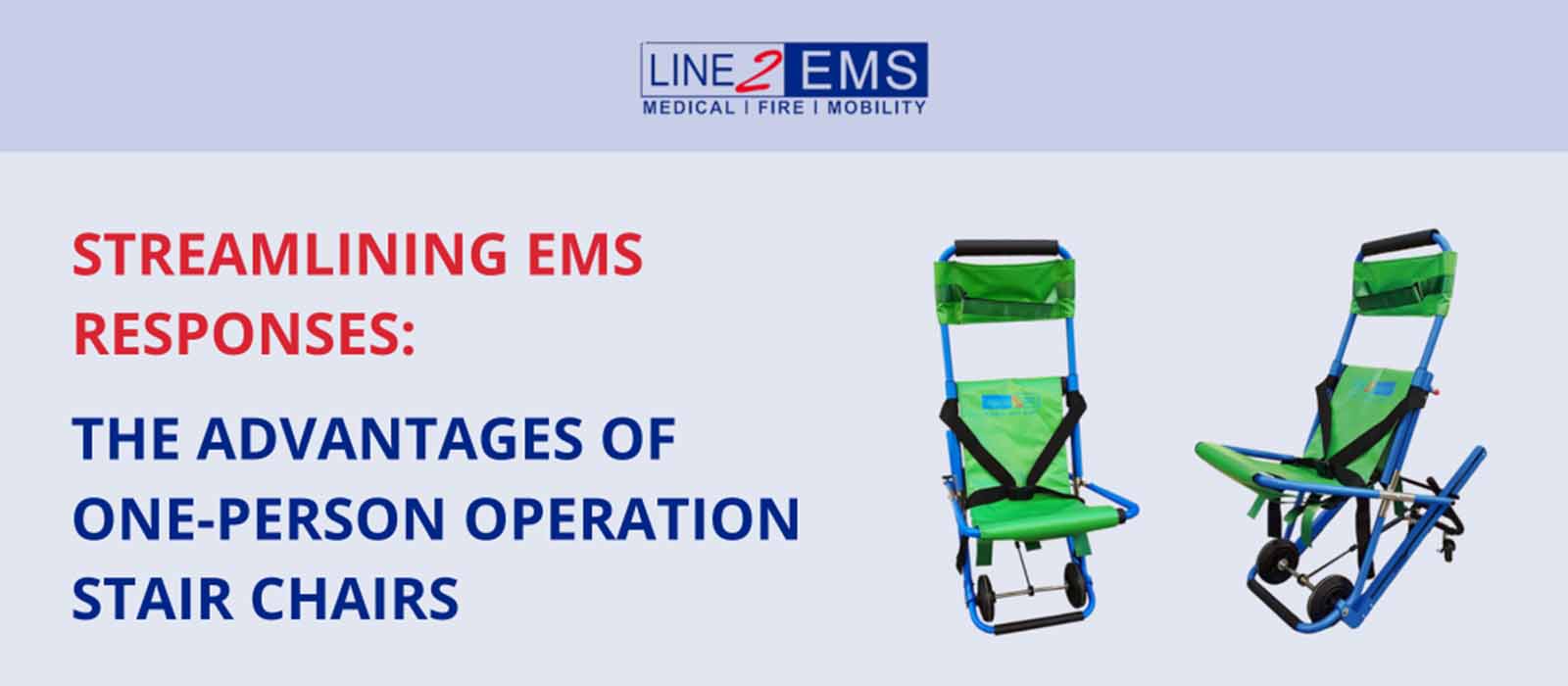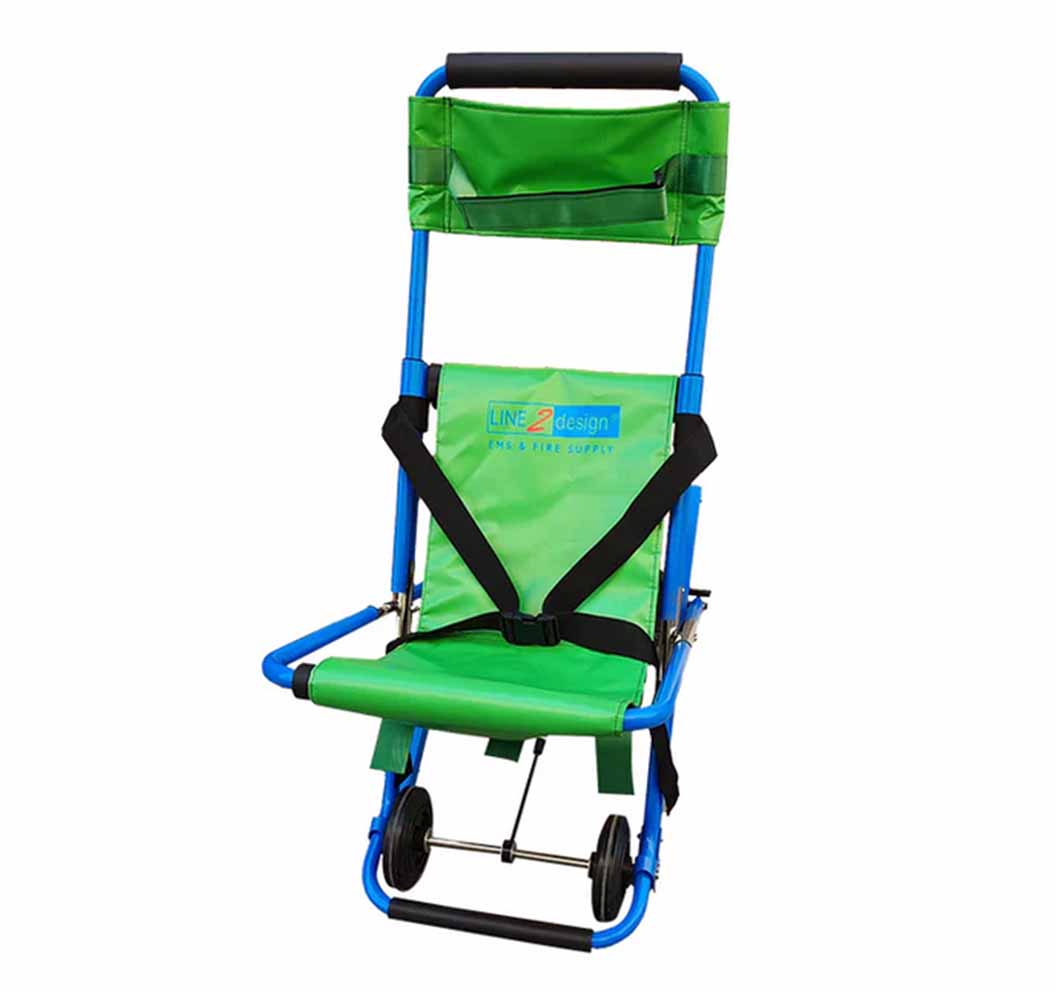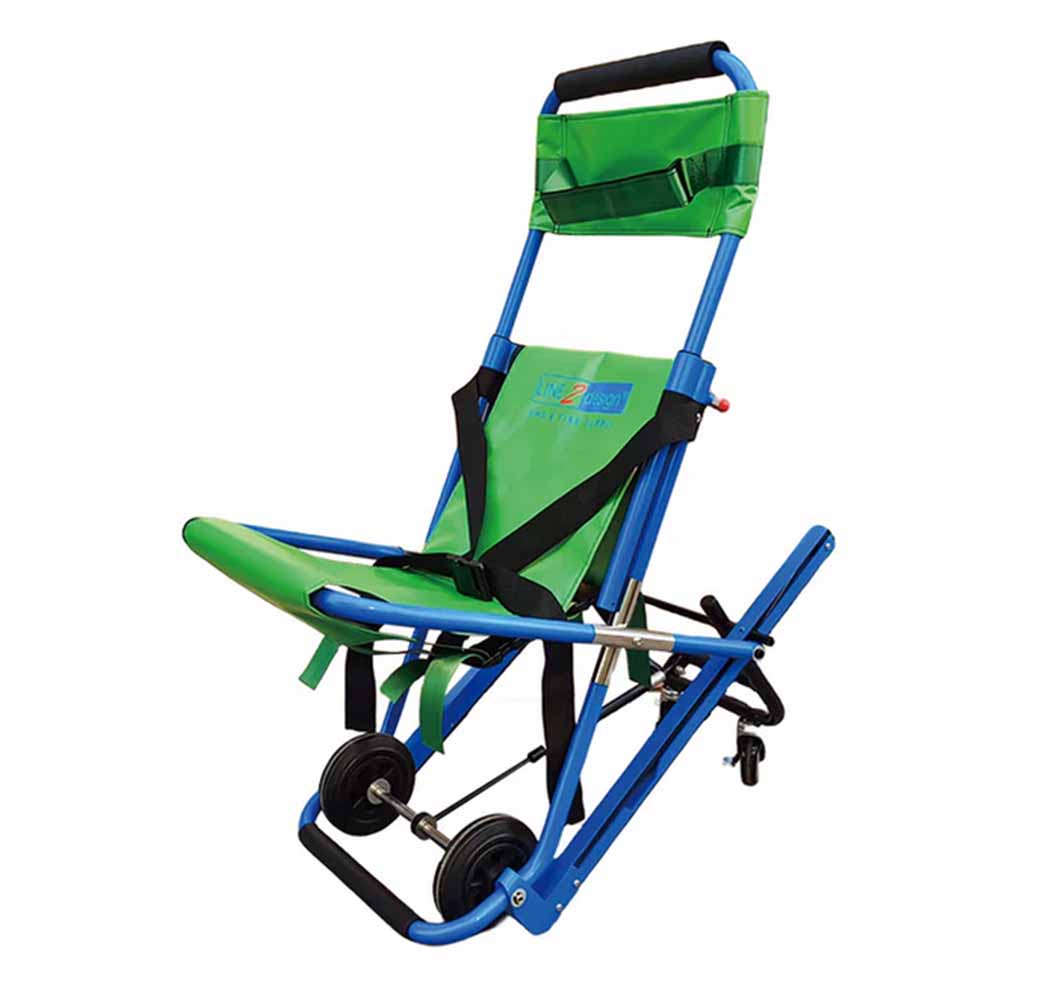Streamlining EMS Responses: The Advantages of One-Person Operation Stair Chairs

Emergency Medical Services (EMS) personnel frequently face significant challenges when navigating stairs during patient transport. Often narrow and steep, stairways can pose considerable risks to the patient and the EMS team, especially in urgent scenarios. Recognizing these challenges, LINE2design has developed an innovative solution to simplify this critical aspect of patient care. The LINE2design EMS Stair Chair is specifically designed for single-operator use, enabling more efficient and safer patient handling. This chair incorporates advanced features that support EMS providers in maneuvering patients smoothly and securely down stairs, even in complex emergency situations. With a focus on safety, ease of use, and operational efficiency, this stair chair represents a significant advancement in emergency medical equipment, tailored to meet the demanding needs of modern EMS professionals
Benefits of One-Person Operation Stair Chairs
In the fast-paced realm of emergency medical services (EMS), efficiency and safety are paramount. One-person operation stair chairs significantly enhance these aspects by streamlining the patient transport process in multi-level environments. Here’s how these chairs make a difference:
1. Enhanced Efficiency:
- Rapid Deployment: One-person operation stair chairs are designed for quick setup and use, which is crucial in emergencies where every second counts. This rapid deployment ensures that patients can swiftly evacuate from hazardous situations without waiting for additional support.
- Reduced Need for Personnel: These chairs reduce the dependency on multiple team members, allowing EMS teams to allocate resources more effectively during critical incidents. This is particularly advantageous in scenarios where manpower is limited or when multiple emergencies occur simultaneously.
2. Increased Safety:
- Controlled Descent: Advanced design features, such as belting systems that glide on stair edges, help control the descent, reducing the physical strain on the operator and minimizing the risk of exacerbating the patient’s injuries.
- Secure Patient Handling: Safety restraints and sling-style seating ensure that patients are securely cradled during transport, which is vital for their safety, particularly for those with spinal injuries or unconscious individuals.
3. Improved Operator Safety:
- Ergonomic Design: The chairs are ergonomically designed to minimize the risk of back injuries and strains for operators, which are common issues in EMS services due to the physical nature of the job.
- Enhanced Maneuverability: With features like extension handles and strategically placed wheels, these chairs can be navigated easily through narrow and steep staircases, which protects the operator from potential slips or falls.
By integrating one-person operation stair chairs into their equipment cache, EMS providers enhance their response capabilities and uphold the highest standards of care and safety for patients and themselves.
Features of the LINE2design EMS Stair Chair
The LINE2design EMS Stair Chair is an essential tool designed to aid single operators in efficiently and safely transporting patients. This chair combines robust construction with innovative features to address the unique challenges of emergency medical scenarios.
- Durable Materials: Constructed with high-quality materials, the stair chair is built to withstand the rigors of frequent use in various emergency environments, ensuring longevity and reliability.
- Four-Wheel Design: Equipped with four sturdy wheels, the chair enhances maneuverability on flat surfaces and stability during transfers, facilitating easier navigation through tight and crowded spaces.
- Innovative Belting System: Features a unique belting system that aids in a controlled and smooth descent on stairs, significantly reducing the manual effort required by the operator and increasing safety for the patient.
- Multiple Safety Restraints: Includes several safety restraints that secure the patient during transport, preventing slips and shifts that could lead to further injury.
- Extension Handle: An extension handle at the back allows the operator to maintain a safe, upright posture while controlling the chair, reducing strain and potential injuries associated with patient transport tasks.
- Easy Storage and Setup: The chair's design considers storage efficiency with its ability to fold compactly, making it ideal for ambulances and emergency rooms with limited space. Its setup process is straightforward, allowing for quick deployment.
This stair chair from LINE2design enhances the efficiency of EMS operations and ensures that patient care and safety are prioritized in critical transport situations.
Comparing Traditional vs. One-Person Operation Stair Chairs
The evolution of stair chairs in emergency medical services highlights a significant shift from traditional multi-person chairs to modern one-person operation models. Each type has distinct advantages and challenges, impacting deployment, manpower, and patient safety.
Traditional Multi-Person Operation Stair Chairs:
Pros:
- Stability: Multiple handlers can provide greater stability and control, reducing the risk of accidents during descent.
- Manpower Utilization: In situations with sufficient staff, these chairs allow for a distribution of the patient's weight, easing physical strain on individual operators.
Cons:
- Resource Intensive: Requires more personnel, which may not be feasible in resource-limited situations or during multi-casualty incidents.
- Coordination Required: The need for synchronized effort can complicate rapid response, especially in tight or crowded staircases.
One-Person Operation Stair Chairs:
Pros:
- Rapid Deployment: Designed for quick and easy setup, these chairs allow a single EMS provider to respond promptly without waiting for additional help.
- Efficiency: Streamlines the process, allowing for faster patient extraction, which is critical in urgent scenarios.
Cons:
- Physical Demand on Operator: Although these chairs are designed to reduce the load, they still place significant physical demand on the single operator, especially in prolonged use cases.
- Limited Use in Certain Scenarios: For heavier patients or in more complex rescue operations, one-person chairs might still require additional support, slightly negating the benefit of single-person operation.
Both types of stair chairs play crucial roles in EMS operations, with the choice largely depending on the specific circumstances of the emergency, available resources, and patient needs.
Incorporating one-person operation stair chairs into EMS protocols significantly enhances the efficiency and safety of emergency medical services. These chairs are designed to optimize rapid response capabilities, allowing single operators to manage patient evacuation effectively and safely, even in challenging environments.



